In Japanese, a "swastika," manji 卍, is sometimes seen in text as a word, in which case it has various meanings depending on context.
Most of the time, it's a slang used by teenagers which means basically nothing, synonymous with yabai やばい, which also means basically nothing.
Meaning
The swastika is a geometric shape, an "equilateral cross with arms bent at right angles, all in the same rotary direction." A "symbol of prosperity and good fortune [...] derived from Sanskrit svastika, meaning “conducive to well-being.”" In Buddhism, it "symbolizes the feet, or the footprints, of the Buddha." In Japan, influenced by Buddhism, it denotes "plurality, abundance, prosperity, and long life."[Swastika - britannica.com, accessed 2020-06-10]
- Images of Buddha sometimes feature a swastika on his chest, hands.
The swastika has nothing to do with nazis, except for the fact that one nazi symbol happens to be a swastika. Just like another nazi symbol is a skull, but nobody says One Piece is a nazi anime just because it has jolly rogers.
Time-wise, the swastika was used in the flag of the nazi party starting in 1920, that's a one century ago. Buddhism originated in ancient India between 6th and 4th centuries BCE. That's over twenty four centuries ago.
If nazis had used a normal cross instead of a swastika, would Christians stop using the cross symbol they've been using for millennia just due to its usage by nazis? Of course not. The same applies to cultures influenced by Buddhism.
Rest assured, the usage of the swastika as a slang by Japanese youths is certainly not indicative of a wave of neo-nazism inspired by JoJo, Hellsing, Youjo Senki 幼女戦記, Dies Irae or whatever other anime with nazis in it.
Anime: Hellsing Ultimate (OVA, Episode 4)
- Context: there's no context in which a cat boy wearing a nazi uniform makes sense.
Geometrically, swastikas can be distinguished by their direction, and in certain contexts the meaning of the swastika changes with its direction.
Note that, regardless of direction, they're still called "swastika," or manji 卍 in Japanese. It just happens there are more specific terms when you need to be more specific for some reason.
- 卍
Left-facing swastika.
Counterclockwise swastika.
Sauwastika. (this isn't a typo.)
Fylfot. (British.)- hidari-manji
左卍
Left swastika.
- hidari-manji
- 卐
Right-facing swastika.
Clockwise swastika.
Backwards swastika.
Gammadion. (British.)- migi-manji
右卍
Right swastika. - gyaku-manji
逆卍
Reverse swastika.
- migi-manji
Honestly, this sounds kinda backwards to me, because 卍 looks like a Beyblade, so it would spin clockwise, right? Like a fan, aerodynamics and all. But it appears whoever came up with these terms was looking at the direction the lines bent toward, instead. Anyway.
The nazi swastika is a right-facing swastika that's rotated 45 degrees. It's specifically called:
- haakenkuroitsu
ハーケンクロイツ
Hakenkreuz. - kagi-juuji
鉤十字
Hooked cross.- The character juu 十 means the number "ten" in Japanese, but due to its cross-shaped shape, it sometimes means the "cross" shape instead.
In the western world, the only well-known use of the swastika is the Hakenkreuz, such that people end up thinking any swastika must be related to nazism, and since nazi ideologies are censored, so are swastikas, and sometimes even the word "swastika" itself becomes self-censored.
In the oriental world, in Japan, China, Korea, Thailand (where that Buddha picture was taken), and so on, swastikas are more commonplace, so they aren't promptly associated with nazism.
- Context: Google Maps uses the swastika to mark the location of
secret nazi hideoutsBuddhist temples like the Kinkaku-ji 金閣寺.
This practice isn't exclusive to Google. All sorts of Japanese maps mark temples using swastikas.
This leads to the problematic situation in which something created in Japan has swastikas all over it—because it's a religious symbol of auspiciousness—which ends up being interpreted in the west as an edgy symbol of offensiveness.
Anime: Yū☆Yū☆Hakusho 幽☆遊☆白書 (Episode 9)
- Context: this anime is so dark and edgy it has a bald nazi dude with a swastika tattoo on his forehead. They even censored it in some TV channels worldwide. So edgy!
- No, wait, nevermind, he's a ninja, not a nazi.
- Both words start with "n," easy to mistake to make.
- I guess the clothes are a good way to tell them apart: nazis wear armbands, while ninjas wear fishnets.
In some cases, people will call the Japanese swastika a "manji" in English, as if, somehow, these swastika-shaped swastikas weren't actually swastikas. It's a swastika, okay? That's the term for it. It's a geometric shape.
It's wrong to say "the manji is not a swastika, the manji is a Buddhist religious symbol that happens to look like a swastika." The correct is to say "the swastika is a Buddhist religious symbol, and manji is how you say swastika in Japanese."
You can't just call the Japanese swastika manji 卍 like you call Japanese comic books manga 漫画 and Chinese cartoons anime アニメ. That would be unnecessarily confusing.
Bottom: Saber セイバー
Anime: Fate/stay night: Unlimited Blade Works (Episode 11, Cropped)
- Context: although Emiya Shirou normally acts as if he were an anti-violence idealist, he's in actuality a genocidal nazi, as evidenced by the swastika pattern decorating his house.
- Or maybe he just lives in Japan. That's also plausible.
Conversely, it would also be wrong to say that any swastika found in anime or in Japan has nothing to do with nazis. Sometimes it's just really a reference to nazism and it has nothing to do with Buddhism or Japan having a different culture at all.
Anime: Excel♥Saga, エクセル♥サーガ (Episode 1)
- This is one of the weirdest shaped pupils I've ever seen.
マジ卍
The phrase maji-manji マジ卍 means the same thing as maji yabai マジやばい.[結局よく分からん!「卍」ってみんなどういう意味で使ってるのか聞いてみた - cancam.jp, accessed 2020-06-12]
It's a slang originally used by JK, the Japanese "high school girls," joshi-kousei 女子高生, gyaru ギャル, and so on. It's an exclamation used when they find something awesome, exciting, incredible, terrible, the best, the worst, etc.
Yes, it can actually spawn phrases that have two antonymous meanings. Observe:
- are wa maji manji datta
あれはマジ卍だった
That was maji-manji.
That was so epic.
That sucked so much.- are wa maji yabakatta
あれはマジやばかった
(same meaning, ambiguity and all.)
- are wa maji yabakatta
The maji マジ means "seriously," "really," and it's already a colloquialism, derived from majime 真面目, which means "diligent," "serious," meanwhile manji means nothing.
I mean, seriously, it means nothing. It doesn't even have anything to do with Buddhism or religion.
It means so much nothing that the whole phrase becomes ambiguous, and because it's so ambiguous, it becomes versatile, able to be used in virtually any situation and context, as it has no connotations or meaning whatsoever besides sounding intense.
Consequently, maji-manji is an ubiquitous teenager slang devoid of sense whose sole purpose appears to be giving older generations a headache trying to figure out what in the world these youths are talking about on LINE and Twitter.
- Context: Shinomiya Kaguya 四宮かぐや did a favor for her kouhai, Ishigami Yuu 石上優, who tells her:
- Shinomiya-senpai......
四宮先輩・・・・・・ - maji-manji ssu......
まじ卍っす・・・・・・
[You] are maji-manji......- ssu
っす
- ssu
- sore, douiu imi desu ka?
それ どういう意味ですか?
That, [what] does [it] mean? - boku mo wakarimasen......
僕もわかりません・・・・・・
[I] don't know either......- Ishigami isn't a riajuu リア充.
To elaborate: words like sugoi すごい and yabai やばい can be used in both good and bad situations to describe something as intense: either intensely good, awesome, exciting, or intensely bad, terrible, dangerous, which is what makes them ambiguous.
- Context: Kanna Kamui カンナカムイ responds to things.
- maji yabaku ne
『マジやばくね』
Isn't it seriously incredible?- Contraction of:
- maji yabakunai
マジやばくない - Since yabai means just that something is intense, whether because it's good or because it's bad, this sentence ends up becoming able to be used in response to good things and to bad things at the same time.
- If someone says something good, maji yabaku ne: isn't that awesome? If someone says something bad, maji yabaku ne: isn't that awful? Or isn't that dangerous?
The phrase maji-manji works in the same principle.
But why is there a manji in maji-manji if maji-manji has nothing to do with manji? There's a few reasons for this.
First, because manji sounds great after maji. They're almost homophonous, so maji-manji is euphonic. This is just like how in English we have a bunch of words with ablaut reduplication: tick-tock, ding-dong, zig-zag, etc.
Second, because it looks great in text: the swastika shape 卍 stands out in tweets and other social media since the Japanese language doesn't have many square-looking geometrical characters like this.
- 凸, 凹 and 回 are other square-looking Japanese characters. In social media, they're sometimes used as gay slangs for top, bottom, and switch, respectively.
Using an IME you can quickly type this swastika (卍) by typing manji まんじ and pressing space, so it's similar to emoji or kaomoji.
Note that the reverse, right-facing swastika (卐) can't be typed this way, which is why only the left-facing one is commonly used around the internet.
Anime: Kaguya-sama wa Kokurasetai? ~Tensai-Tachi no Ren'ai Zunousen~ かぐや様は告らせたい?~天才たちの恋愛頭脳戦~ (Season 2) (Episode 1, Stitch)
- seitokai-shitsu dare mo inai shi~
生徒会室誰もいないし~
There's nobody in the student council room. - kiitenai shi~
聞いてないし~
[I] didn't hear [about this]. - yooji owan'naishi~
よーじおわんないし~
The things [I] have to do don't end~ (i.e. Hayasaka's errands don't end.)- youji owaranai shi
用事終らないし
- youji owaranai shi
- maji-manji~
マジ卍~
[This is the worst]~ - te na wake de himajin wa toshoshitsu ni shuugoo
てなわけでヒマジンは図書室にシューゴー
[Given that], people with free time meet up in the library.- himajin
暇人
A person who is hima 暇, being "free," not busy. - shuugou suru
集合する
To assemble. To convene. To meet up.
- himajin
Lastly, there's the usage of the word before it became popularly used as a JK slang, which is probably where it really originates from.
Gangs
Before its spread as an intense but otherwise meaningless slang, manji 卍 was attributed to gang members, delinquents, etc. who were seen as yabai やばい, as strong, dangerous, not to be trifled with.
It's likely that the popular usage of maji-manji derived from this gang usage by adding other meanings of yabai—"incredible," "awesome"—to manji.
- yankii
ヤンキー
Delinquents. - bousouzoku
暴走族
Biker gangs.
- Context: this is not a nazi gang. This is a Japanese gang called Black Emperor that happens to use the swastika symbol.
- Kuroi Koutei
黒い皇帝
Black Emperor. (literally.) - On the top-right image, members of the gang are graffiting on a wall. The text reads:
- shine
死ね
Die. - kuroi koutei
黒い皇帝 - BLACK卐EMPEROR
(the swastika isn't read manji here, it's merely a decorative symbol used to separate words.)- It's hard to see in the image, but one of these guys actually wrote kuroi 黒い on top of the word "black," and koutei 皇帝 on top of the word "emperor."
- How nice of him to go through the effort of providing furigana for people who couldn't read English in the 70's in the wall graffiti.
- On the other hand they just wrote the name of the gang like 3 times on the same wall, they must have really liked that name.
卍系
Another manji-related slang is manji-kei 卍系. Specifically:
- manji-kei danshi
卍系男子
Swastika-type boy. - manji-kei joshi
卍系女子
Swastika-type girl.
Words with the ~kei ~系 suffix like this classify people by their "type." In slangs, it divides people in tribes and personalities. Foe example: nikushokukei-joshi 肉食系女子, "carnivorous-type (i.e. romantically assertive) girl."
What manji-kei means exactly varies. It could be in reference to delinquents, given the gang-related usage mentioned before, but it could also be other things.
For example, before maji-manji was popularized, there were many manji-kei danshi in the Saitama prefecture, who were so called because:[「まじ卍」以前から埼玉では“卍系男子”多かった説 - narinari.com, accessed 2020-06-12]
- Saitama dewa yankii-kei no danshi ga jishin no ude ni manji no moji wo boorupen ya enpitsu nado de kakikomi, "ueei" to ii-nagara sono manji wo misete aisatsu suru
埼玉ではヤンキー系の男子が自身の腕に卍の文字をボールペンや鉛筆などで書き込み、「うぇーい」と言いながらその卍を見せて挨拶する
In Saitama, delinquent-type boys wrote the swastika character on [their] own arms using ball-point pens, pencils, etc. and greet [others] saying "yay" and showing the swastika.- All it takes to be a tribe is having a ritual, it seems.
Alternatively, manji-kei is also a fashion style characterized by fluorescent sneakers, ripped jeans, Adidas pants (black with white stripes), and baseball caps, among other things.[ヤンキーがよく着てるアディパン - detail.chiebukuro.yahoo.co.jp, accessed 2020-06-12]
Lastly, there's Gira Gira Manji-kei ギラギラ卍系, "Dazzlingly Swastika Type," an album by the visual-kei band Gravity. Apparently, this is their self-introduction as some sort of dazzling manji-kei band.
- Context: this is not a nazi band. This is a Japanese band that happens to use the swastika symbol.
- Gurabithi ofisharu burogu
グラビティオフィシャルブログ
Gravity official blog. (where this image was taken from.) - "zenbu tsubusu"
「全部潰す」
"To crush everything." (in the sense of destroying everything.)
卍卍卍
On the internet, the swastika can show up at the end of sentences as if they were exclamation points.
Just like maji-manji can mean something is exciting, this usage of the swastika generally happens when someone finds something exciting, when they're hyped up, happy, amazed.[「卍卍卍」ってどういう意味?SNSで文末に卍を置く時の使い方5つ - e-jyouhou.com, accessed 2020-06-12]
The number of swastikas used varies. 卍, 卍卍, 卍卍卍, etc. This is just like the usage of w's at the end of sentences in Japanese.
Sometimes the swastikas wrap words like 卍whatever卍.
Note that just like typing "lol" doesn't sound like you're actually laughing, typing 卍 doesn't really sound like you're hyped for anything, but that's what it's supposed to mean, anyway.
Pose
A fad is doing a "swastika pose," manji-poosu 卍ポース, when taking a photo, or something like that.
There are two different, common ways to make a swastika, and sometimes people say manji 卍 as they make the swastika just like people say "cheese" before taking a photo.
The first post is done by crossing one's arms. Not like this X, like this +. And then you use bend your wrists to turn your hands into the swastika's hooks, 卍.
- Context: this is not a nazi salute. This is a pose that happens to look like a swastika.
This pose is featured in the music video below. (warning: somewhat vulgar.)
The second pose is done with the whole body, by bending your legs and arms to make a swastika shape. The result looks like an exaggerated running pose.
Wrestling Hold
The manji-gatame 卍固め, "swastika hold," is a wrestling hold that resembles a swastika. It's also known as "octopus hold," okutopasu hoorudo オクトパス・ホールド.
Receiver: Matsuno Osomatsu 松野おそ松
Anime: Osomatsu-san おそ松さん (Episode 4, Stitch)
- Context: this isn't a nazi wrestling hold. This is just a wrestling hold that happens to look like a swastika, and honestly it doesn't even always look so perfectly like a swastika.
And then, of course, there's this:
- Context: gyaru Mai-nyun まいにゅん unleashes her ultimate technique on sukeban Kamio Yui 神緒ゆい.
- yankii gyaru ougi
ヤンキーギャル奥義
Delinquent gal secret technique. - maji-manji-gatame
マジ卍固め
- This is the skill that Mai-nyun acquired after arduous training as a gyaru. Don't ask me what in the world that training was. I have absolutely no idea.
- Unlike the normal manji-gatame, which targets only a few vital spots, the maji-manji-gatame targets 109 vital spots, according to the manga.
- This number, 109, pronounced maru-kyuu, literally "circle nine," with "circle" being a way to say "zero" when spelling out numbers, is in reference to the iconic department store in Shibuya 渋谷, the Ichi-maru-kyuu 109, which is a tower with a red 109 written on it.
卍解
In the series Bleach, which deals with afterlife, "grim reapers," shinigami 死神, and all that sort of stuff, the soul-slayer swords, zanpakutou 斬魄刀, have abilities that can be released at two different levels when certain conditions are met.
The first release is called shikai 始解, written with the kanji for the words "to start," hajimeru 始める, and "to untie," "to unbind," toku 解く. The second and full release is called bankai 卍解.
Note that, in Japanese, bankai 卍解 doesn't mean "full release" or "final release" or anything like that. In fact, it doesn't mean anything. It's a made-up word used only in Bleach. All they did was keep the kai 解 and replace shi 始 for a swastika because it's a religious symbol.
東卍
The term Touman 東卍 is an abbreviation of Toukyou Manji-kai 東京卍會, a gang central to the plot of the manga "Tokyo Revengers," Toukyou Ribenjaazu 東京卍リベンジャーズ. The term is also used to refer to the manga series itself.
The swastika in the title of the manga isn't read manji, instead, it's merely decorative, its only function being separating the words, just like in BLACK卐EMPEROR, except it's left-facing because you actually have to type this thing in a computer, it's not freehand graffiti.
The swastika is also featured in the cover of tankobon volumes, and characters don clothes with swastikas, again, just like the real-life 70's gang.
The manji in the name of the gang probably comes from the name of the boss of the gang: Sano Manjirou 佐野万次郎, or maybe he was just born with a name perfect to be a gang leader, just like Giorno Giovanna was born with a name perfect be a JoJo.
- Context: the boss arrives, characters react to his arrival.
- Note: one of the characters is all beaten up, panting haa haa ハァハァ and bleeding because he was forced by the gang to participate in fighting matches involving gambling, which the gang profits from.
- muteki no Maikii
無敵の“マイキー”
The peerless Mikey.- muteki
無敵
Enemy-less. Without enemy.
Peerless.
Invincible.
- muteki
- Tooman no bosu da!!!
東卍(トーマン)のボスだ!!!
The boss of Touman!- See: long vowel, gikun 義訓.
- koitsu ga
こいつが
This guy [is]... - koitsu ga Toukyou Manji-kai no toppu
こいつが東京卍會のトップ
This guy is the boss of Toukyou Manji-kai.- toppu
トップ
Top.
Boss. (who's at top of an organization.) - ~kai
~會
Association. - So Toukyou Manji-kai is literally Tokyo Swastika Association.
- toppu
- Sano Manjirou!!?
佐野万次郎!!?
- Note: the jirou 次郎 name suffix normally means second born son, and implies he might have an older brother called Sano Man'ichirou 佐野万一郎 or something like that.
Kanji
Although manji 卍 looks like a symbol, it's technically a kanji 漢字.
Its radical is 十.
Its reading is said to come from to come from manji 万字. It's called wànzì 萬字 in Chinese and in Korean manja 만자.
It's also spelled manji 卍字.
Its stroke order is uncertain, with different dictionaries providing differing ways to write it.
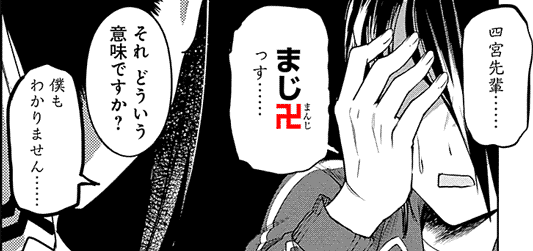
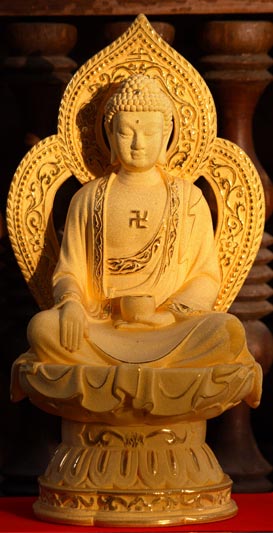
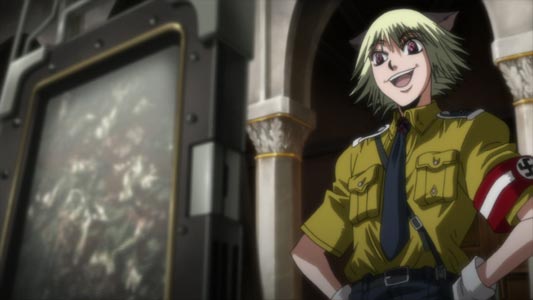
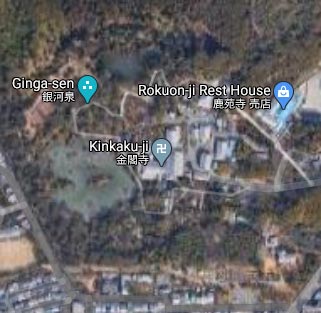
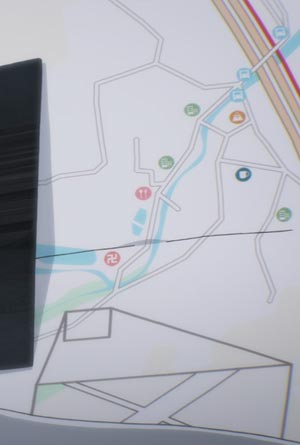
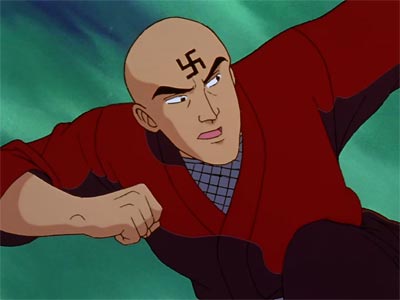


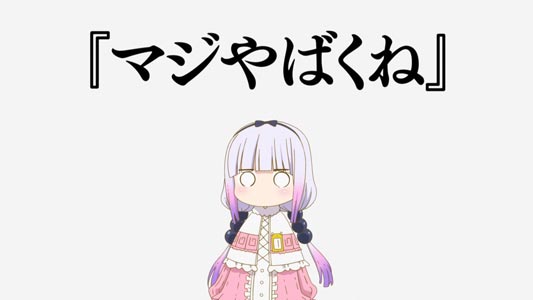
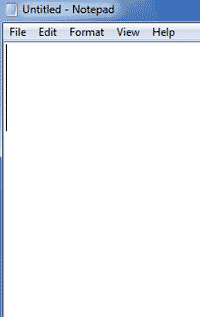
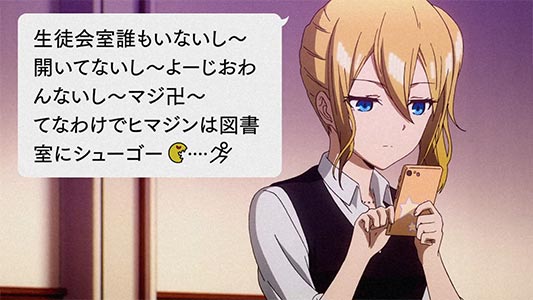
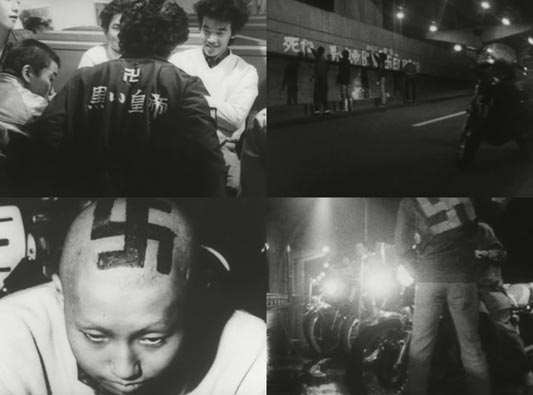
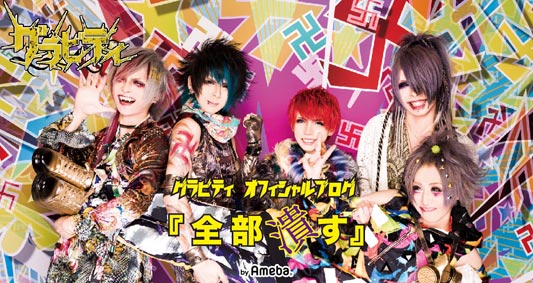

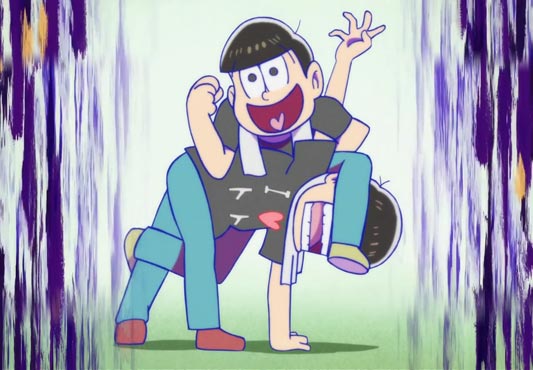
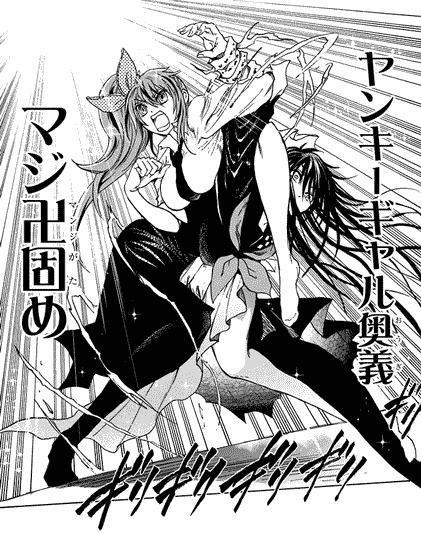
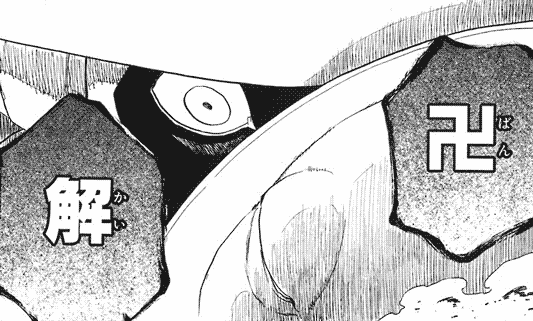
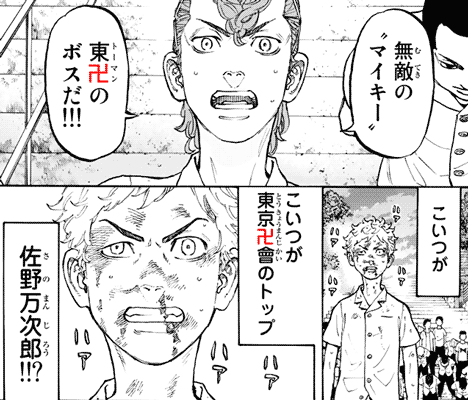
Wow very interesting! The amount of research you did was amazing. The poster with de band full of swastikas all over it LMAO I couldn't help but laugh xd. One tends to forget how different westarn and eastern culture really are...
ReplyDeletethat was a very interesting read! i learned alot from it. thank you for the amount of detail and effort you put into this
ReplyDeleteThis is an incredible article, so well written!! thx a lot
ReplyDeleteAmazing read, I was searching a lot about it after reading Tokyo Revengers and I got all my answers here. Thank you !
ReplyDeletewooow , i am baffled by all this info. Great reasearch and explanation
ReplyDelete